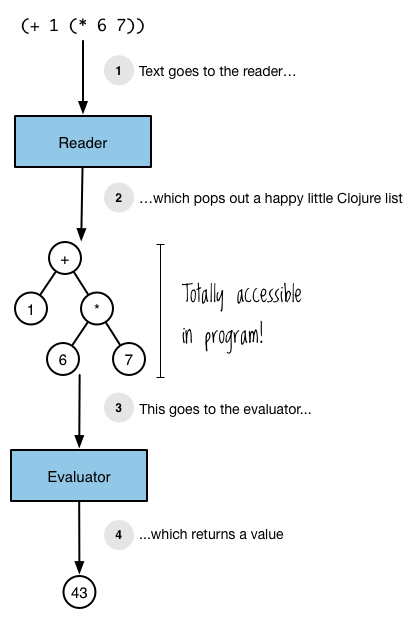Given a language, define a represention for its grammar along with an interpreter that uses the representation to interpret sentences in the language.
So this is a pattern for writing a langauge, which might be the same thing as writing a DSL depending on what your trying to do. The first thing to consider is if you want an external or internal DSL.
If your building an internal DSL, then your in luck. CLojure is a Lisp and you can make a DSL like so:
;; ignore the namespace
(ns my.m$macros)
(defmacro backwards
[form]
(reverse form))
(my.m/backwards (" backwards" " am" "I" str))
This macro backwards intercepted the form (" backwards" " am" "I" str) and reversed it
to (str "I" "am " "backwards") before that form evaluated. This is important, because
The operator must be the first thing in the form/list. See what happens without the macro?
(" backwards" " am" "I" str)
This is made possible because Clojure is a Lisp and so you as a programer can manipulate both the regular form (what any language can do) but also the form created the parser and lexer:

Generally speaking, you should strongly prefer functions over macros. However their are times when using a macro can greatly simplify a problem. Here is a blog post about when to use macros if you want to learn more. But the three main situations are: